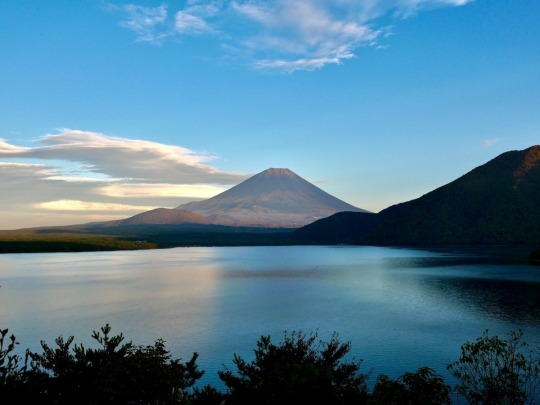#Lake Motosu
Text
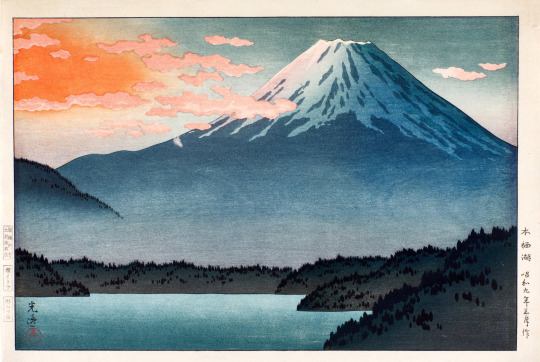
Tsuchiya Koitsu (1870-1949) - Lake Motosu (Motosu-ko)
Woodblock print. Created in 1934, post-war printing.
10.25 x 15.5 inches, 26.1 x 39.2 cm. Estimate: £1,000-1,500.
Sold Sotheby's, London, 10 May 2023 for £3,810 incl B.P.
Lake Motosu is located in southern Yamanashi Prefecture, the third-largest of the Fuji Five Lakes.
45 notes
·
View notes
Text
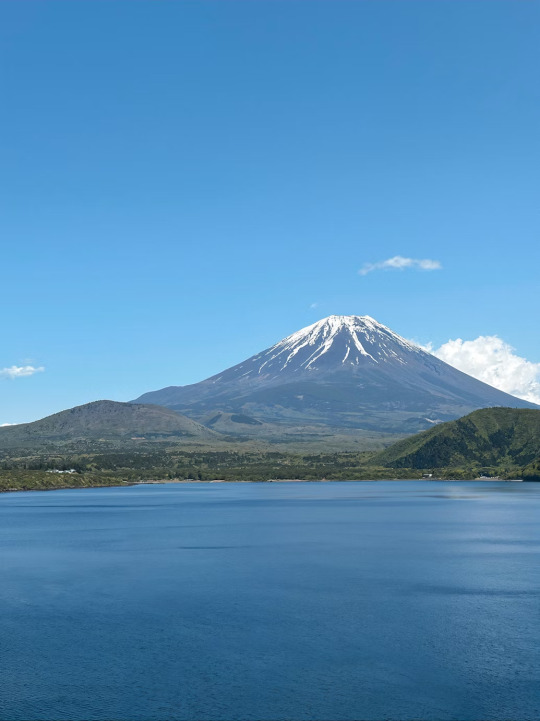
Lake Motosu, Yamanashi, Japan
Marek Okon
5 notes
·
View notes
Text
How to see beautiful Mt.Fuji
How to see beautiful Mt.Fuji
Hi I’m Nobu, I like traveling overseas and in Japan, visited 25 countries!
I’m a National Government Licensed Guide Interpreter of English for 8 years.
For the people who are interested in and planning trip to Japan ,I show you hidden local information which you have never seen and heard of through books and ordinary site!
You will find unexpected fun through my…
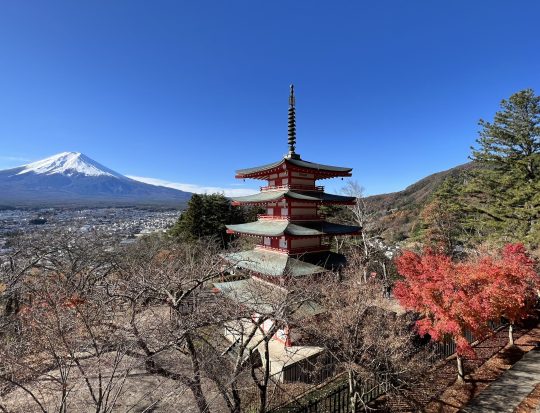
View On WordPress
#arakurayama sengen shrine#lake Kawaguchiko#lake Yamanakako#Motosu lake#Mt.Fuji#odhino hakkai#oishi park#Tokyo travel tips
1 note
·
View note
Photo
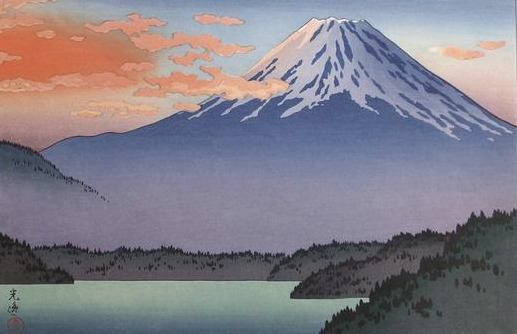
“Lake Motosu”, by Tsuchiya Koitsu, 1934, Japan
181 notes
·
View notes
Text

Tsuchiya Koitsu
Lake Motosu
1934
#tsuchiya koitsu#japanese landscape#japanese art#japanese artist#asian art#woodcut#woodblock print#landscape art#landscape#japanese prints#art history#aesthetictumblr#tumblraesthetic#tumblrpic#tumblrpictures#tumblr art#aesthetic#beauty
11 notes
·
View notes
Text
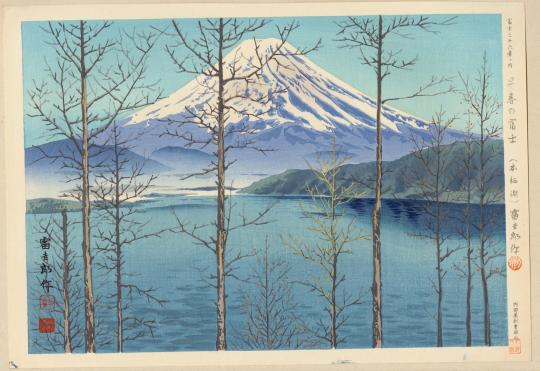
No. 1- Fuji In Early Spring (Lake Motosu) - 早春の冨士(本栖湖)
Tokuriki Tomikichiro - 1939
#art#japan#japanese culture#japanese art#japan art#ukiyoe#woodblock#woodblock print#ukiyo e#asian art#japanese woodblock#tokuriki tomikichiro
13 notes
·
View notes
Text
9 địa điểm đẹp nhất để ngắm núi Phú Sĩ
Núi Phú Sĩ, còn được gọi là "Núi Fuji", là biểu tượng văn hóa và thiên nhiên quan trọng của Nhật Bản. Với độ cao 3.776 mét, núi Phú Sĩ là ngọn núi cao nhất trong số ẩn sĩ Nhật Bản và là một trong những địa điểm du lịch phổ biến nhất trong nước. Đây là 9 địa điểm đẹp nhất để ngắm vẻ đẹp núi Phú Sĩ:
Hồ Kawaguchiko
Hồ Kawaguchiko là một trong năm hồ nằm ở vùng Five Lakes của núi Phú Sĩ, tọa lạc tại Yamanashi, Nhật Bản. Với vẻ đẹp hùng vĩ và không gian yên tĩnh, hồ Kawaguchiko đã trở thành một điểm đến du lịch phổ biến cho cả du khách trong và ngoài nước.Hồ Kawaguchiko nổi tiếng với khung cảnh thiên nhiên tuyệt đẹp, trong đó núi Phú Sĩ là tâm điểm nổi bật. Khi trời quang đãng, du khách có thể thấy rõ hình ảnh núi Phú Sĩ phản chiếu trên mặt nước trong suốt của hồ, tạo nên một cảnh quan tuyệt đẹp không thể nào quên. Bên cạnh đó, hồ Kawaguchiko cũng được bao quanh bởi những dãy núi xanh mướt và những cánh đồng hoa tươi tắn, tạo nên một không gian thơ mộng và hài hòa.Du khách có thể tham gia vào nhiều hoạt động thú vị tại hồ Kawaguchiko. Một trong số đó là đi thuyền trên hồ để chiêm ngưỡng toàn cảnh núi Phú Sĩ từ xa. Hoặc bạn có thể thuê xe đạp để khám phá vùng quanh hồ và tận hưởng không khí trong lành. Nếu bạn muốn thách thức bản thân, hãy leo lên một trong những ngọn núi nhỏ xung quanh hồ để có cái nhìn toàn diện về khu vực này.
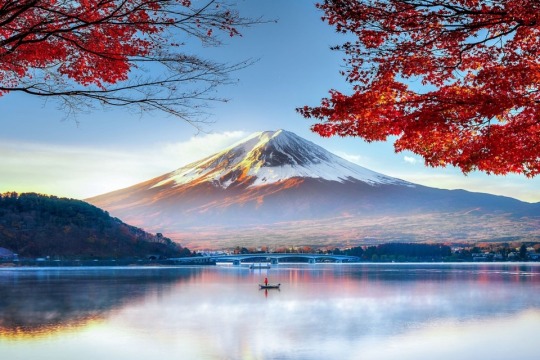
Hakone
Hakone là một điểm đến du lịch nổi tiếng nằm trong vùng Kanto của Nhật Bản. Với vẻ đẹp hoang sơ và không gian thiên nhiên tuyệt vời, Hakone thu hút du khách từ khắp nơi trên thế giới.Hakone được bao quanh bởi một cảnh quan đa dạng, từ các ngọn núi, hồ núi, rừng rậm cho đến các suối nước nóng và thác nước. Một điểm đặc biệt của Hakone là sự hiện diện của núi Phú Sĩ, biểu tượng văn hóa quan trọng của Nhật Bản. Du khách có thể tận hưởng cảnh quan tuyệt đẹp của núi Phú Sĩ từ các điểm ngắm trong khu vực.Hakone cũng nổi tiếng với các suối nước nóng tự nhiên, nơi du khách có thể thả mình vào sự thư giãn và hưởng thụ những lợi ích sức khỏe của nước nóng. Khu vực này cũng có nhiều nhà nghỉ và khách sạn sang trọng để du khách có thể trải nghiệm một kỳ nghỉ thoải mái và được chăm sóc tận hưởng.
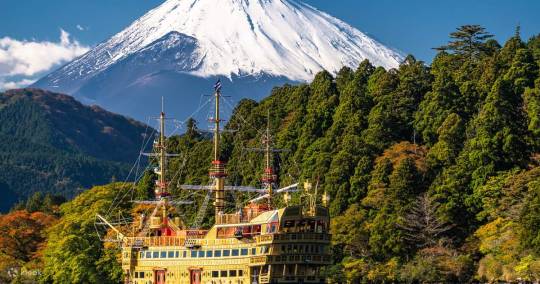
Kamakura
Kamakura là một thành phố cổ xưa nằm ở vùng Kanto của Nhật Bản. Với lịch sử lâu đời và vẻ đẹp kiến trúc độc đáo, Kamakura thu hút du khách bằng sự hòa quyện giữa văn hóa truyền thống và thiên nhiên tuyệt đẹp.Kamakura được biết đến là thủ đô của Nhật Bản từ thế kỷ 12 đến thế kỷ 14 và vẫn giữ lại nhiều di tích lịch sử quan trọng. Một trong những điểm đáng chú ý nhất là Đền Kotoku-in, nơi đặt tượng Phật Đại Bi đồ sắt khổng lồ, còn được gọi là Đại tượng Phật Hạt Nhân. Điểm đến khác là Chùa Hase-dera, với cảnh quan đẹp và tượng Phật Kannon gỗ cao 9,18 mét, thu hút sự tôn kính và sự ngưỡng mộ của du khách.

Lễ hội Shibazakura
Lễ hội Shibazakura trên núi Phú Sĩ là một sự kiện nổi tiếng thu hút du khách từ khắp nơi đến vùng Yamanashi của Nhật Bản. Được tổ chức hàng năm vào mùa xuân, lễ hội này là một cảnh tượng tuyệt đẹp của hàng ngàn cây hoa Shibazakura (hoa thạch thảo) nở rộ trên đồng cỏ xanh tạo thành một khung cảnh màu hồng, tím và trắng mê hoặc mắt người.Lễ hội Shibazakura được tổ chức tại khu vực vườn hoa Fuji Motosu, nằm ở chân núi Phú Sĩ. Không chỉ có Shibazakura, du khách còn có cơ hội ngắm nhìn tuyệt phẩm thiên nhiên này trong bối cảnh núi Phú Sĩ mạnh mẽ và hồ Motosu xanh trong trẻo. Từ xa, cảnh quan này tạo nên một bức tranh tuyệt đẹp, như một thiên đường hoa mùa xuân.
Lễ hội Shibazakura không chỉ là nơi để ngắm nhìn hoa đẹp mà còn có nhiều hoạt động thú vị khác. Du khách có thể tham gia vào các buổi biểu diễn truyền thống, trải nghiệm văn hóa Nhật Bản, thưởng thức các món ăn địa phương và mua sắm các sản phẩm thủ công truyền thống. Đây là cơ hội tuyệt vời để tận hưởng không chỉ vẻ đẹp của hoa Shibazakura mà còn cả văn hóa và ẩm thực Nhật Bản.

Enoshima
Enoshima là một hòn đảo nhỏ nằm gần bờ biển Kamakura, Nhật Bản. Với vẻ đẹp thiên nhiên tuyệt đẹp và di sản văn hóa độc đáo, Enoshima là một điểm đến du lịch phổ biến và thu hút du khách từ khắp nơi.Đảo Enoshima nổi tiếng với cảnh quan đa dạng, từ bãi biển tuyệt đẹp và đồng cỏ xanh mướt cho đến các ngọn đồi và rừng rậm. Du khách có thể thư giãn trên bãi biển hay tắm biển trong làn nước trong xanh. Điểm đặc biệt là cầu Enoshima, một cây cầu dẫn từ đất liền tới đảo, mang lại một trải nghiệm đi bộ độc đáo và tuyệt vời.
Enoshima cũng nổi tiếng với các ngôi đền và đền thờ lịch sử. Đền Enoshima là một trong những ngôi đền quan trọng nhất trên hòn đảo, nơi du khách có thể ngắm nhìn cảnh quan biển tuyệt đẹp từ đỉnh đồi. Ngoài ra, du khách cũng có thể thăm viếng Đền Benten, nơi tôn vinh nữ thần Benten, được coi là bảo vật biển và tài lộc.
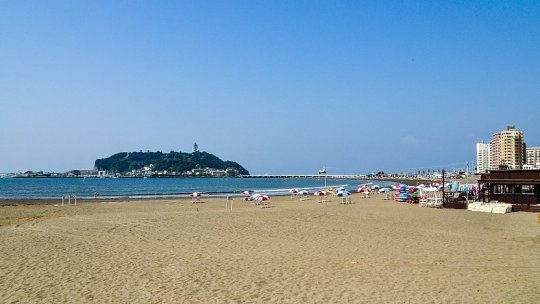
Iyashi no Sato
Iyashi no Sato là một làng truyền thống nằm ẩn mình trong vùng Yamanashi của Nhật Bản. Với cảnh quan đẹp và không gian yên bình, làng này là một điểm đến lý tưởng cho những ai muốn trải nghiệm văn hóa và thư giãn.Iyashi no Sato được xây dựng lại sau khi bị tàn phá trong một trận lở đất vào những năm 1960. Hôm nay, làng truyền thống đã được phục hồi và trở thành một điểm đến văn hóa phong cách Edo độc đáo. Với những ngôi nhà gỗ truyền thống, mái ngói thấp, và cánh đồng lúa xanh mướt xung quanh, Iyashi no Sato mang đến cảm giác như đang bước vào một bức tranh cổ tích.
Du khách có thể khám phá các cửa hàng thủ công truyền thống, trong đó có thể tìm thấy các sản phẩm thủ công như nón trúc, áo kimono và đồ gốm. Không chỉ vậy, Iyashi no Sato còn có một số công viên và vườn hoa, nơi du khách có thể đi dạo và thưởng thức cảnh quan tuyệt đẹp của núi Phú Sĩ trong xa xôi.

Gotemba
Gotemba là một thành phố nằm ở vùng Shizuoka, Nhật Bản, nổi tiếng với cảnh quan thiên nhiên tuyệt đẹp và vị trí lý tưởng gần núi Phú Sĩ. Với vẻ đẹp hoang sơ của núi Phú Sĩ và cảnh quan đồng cỏ xanh mướt, Gotemba là một điểm đến phổ biến cho du khách muốn thư giãn và tận hưởng không gian tự nhiên.Gotemba cũng nổi tiếng với khu vực mua sắm Gotemba Premium Outlets. Đây là một trung tâm mua sắm lớn với hơn 200 cửa hàng của các thương hiệu nổi tiếng, trong đó có thời trang, giày dép, đồ gia dụng và nhiều hơn nữa. Du khách có thể tìm thấy những mặt hàng cao cấp với giá ưu đãi và thưởng thức trải nghiệm mua sắm tuyệt vời.
Đối với những người yêu thích thiên nhiên, Gotemba cũng có nhiều hoạt động hấp dẫn. Du khách có thể tham gia vào các chuyến leo núi Phú Sĩ, tận hưởng cảnh quan đẹp từ đỉnh núi hoặc tham gia các hoạt động như leo đá, dạo chơi qua các đường mòn đi bộ trong khu vực. Bên cạnh đó, Gotemba còn có các công viên và vườn hoa xanh tươi, nơi du khách có thể thư giãn và thưởng thức không gian tự nhiên yên bình.

Cao nguyên Fuji
Cao nguyên Fuji Q, còn được gọi là Kōshū Fujiyama Highground, là một khu vực nằm gần núi Phú Sĩ ở tỉnh Yamanashi, Nhật Bản. Với vị trí độc đáo và cảnh quan tuyệt đẹp, cao nguyên này là một điểm đến phổ biến cho du khách muốn tận hưởng vẻ đẹp tự nhiên và tham gia vào các hoạt động giải trí.Cao nguyên Fuji Q nổi tiếng với công viên giải trí Fuji-Q Highland, nơi du khách có thể tìm thấy một loạt các trò chơi mạo hiểm và các cỗ máy quay vòng thú vị. Với những trò chơi kích thích như roller coaster tốc độ cao và những trò chơi hấp dẫn khác, công viên giải trí này hứa hẹn mang đến những trải nghiệm đáng nhớ và cảm giác mạnh mẽ.
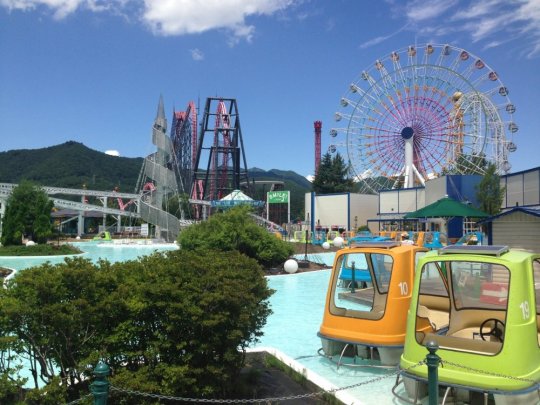
Tháp chọc trời Tokyo
Tháp chọc trời Tokyo, còn được gọi là Tokyo Skytree, là biểu tượng đặc trưng của thành phố Tokyo và là một trong những tháp chọc trời cao nhất trên thế giới. Với vẻ đẹp kiến trúc độc đáo và tầm nhìn tuyệt vời từ đỉnh, tháp chọc trời Tokyo là một điểm đến phổ biến cho du khách muốn khám phá thành phố từ một góc nhìn cao nhất.Với chiều cao lên tới 634 mét, Tháp chọc trời Tokyo là một công trình kiến trúc ấn tượng. Thiết kế của nó kết hợp giữa phong cách hiện đại và truyền thống Nhật Bản, tạo nên một cảm giác hài hòa và độc đáo. Du khách có thể tham quan tầng quan sát của tháp, nơi có các sàn quan sát với cửa sổ toàn cảnh, cho phép nhìn ra khắp phạm vi thành phố Tokyo và ngắm nhìn vẻ đẹp lộng lẫy của núi Phú Sĩ từ xa.
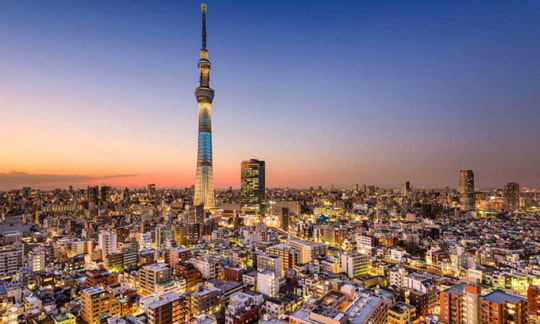
Nếu bạn đang tìm kiếm hỗ trợ và tư vấn về 9 địa điểm đẹp nhất để ngắm núi Phú Sĩ .Nhật Bản hãy liên hệ với NhatbanAZ. Chúng tôi sẽ giúp bạn bắt đầu hành trình khám phá đất nước mặt trời mọc này một cách dễ dàng và thú vị.
Các địa điểm ưa thích
Saitama - Thành phố cười của Nhật Bản
Chiba - Thiên đường cho những người yêu thích thiên nhiên
Kanagawa - Thiên đường của thiên nhiên và lịch sử
Tokyo - Trái tim của nước Nhật
Kanto - Nơi giao thoa của văn hóa, nghệ thuật và thiên nhiên Nhật Bản
Phú Sĩ
Tour làng cổ Nhật Bản 6 ngày 5 đêm | Tour trượt tuyết
Tour du lịch Nhật Bản mùa hoa anh đào 6 ngày 5 đêm - Tour mùa Xuân
Tour Nhật Bản Freeday - thảnh thơi khám phá Nhật Bản chỉ từ 25,9 triệu
Leo núi Phú Sĩ - Kinh nghiệm và thông tin hữu ích
Cần chuẩn bị gì trước khi leo núi Phú Sĩ?
Xem thêm:
Làm gì ở Osaka – Hành trình 2 ngày đến Osaka
Cấu trúc đền chùa tại Nhật Bản
Du lịch nhật bản tháng 2 mùa xuân bắt đầu với hoa anh đào sớm
Top 5 phố ẩm thực Nhật Bản không thể cưỡng lại
Cấp Lại Visa Nhật Bản Sau Dịch Covid – 19
0 notes
Text
MY DREAM DESTINATION
The tallest and most recognizable mountain in Japan is the fabled Mount Fuji, also referred to as Fujisan by the locals. It is one of the top travel spots in the nation and is well-liked by both domestic and international tourists. With only rudimentary hiking gear, Mount Fuji gives one of the most empowering experiences you can have, even if you're not an experienced hiker. Our recommended two-day schedule is made to provide you with a complete and well-rounded experience at Mount Fuji. You can adjust this schedule to better fit your needs, based on the priorities you have for your trip. Cheers!Information to consider before visiting Mount Fuji,
Mount Fuji is a famous and iconic mountain located in Japan. It is an active stratovolcano and is the highest mountain in Japan, standing at 3,776 meters (12,389 feet) tall. Mount Fuji is known for its symmetrical cone shape and is a popular destination for tourists and climbers. Mount Fuji’s longitude is at 138°451 E and its latitude is 35°215 N. It is 3775 metres above sea level. The temperature varies between -18° to 8°C. The climate is very cold due to the altitude and the cone is covered by snow throughout the year and the higher up you go the colder it is.
Mount Fuji, or Fuji-san as it is known in Japanese, is located on the main island of Honshu in Japan. It is situated about 100 kilometers (62 miles) southwest of Tokyo, the capital city of Japan. Mount Fuji stands tall in the Chubu region, straddling the border of Shizuoka and Yamanashi prefectures. Rising majestically from the surrounding landscapes, Mount Fuji is an iconic symbol of Japan. Its distinctive symmetrical cone shape and snow-capped peak make it a breathtaking sight to behold. The mountain is visible from various vantage points, and on clear days, it can even be seen from Tokyo.
Mount Fuji is an active stratovolcano, which means it is formed from layers of hardened lava, volcanic ash, and rock fragments. It has a long history of volcanic activity, with its last eruption occurring in 1707 during the Edo period. Despite its active nature, Mount Fuji is considered relatively stable, with no major eruptions in recent centuries.
The mountain's location has made it a popular destination for both locals and international visitors. Every year, thousands of climbers from around the world embark on the journey to conquer its summit. The climbing season typically runs from July to early September when the weather conditions are more favorable.
Surrounding Mount Fuji are the Fuji Five Lakes, which include Lake Kawaguchi, Lake Yamanaka, Lake Sai, Lake Shoji, and Lake Motosu. These lakes offer stunning views of the mountain, and their tranquil surroundings provide a picturesque setting for visitors. In addition to its natural beauty, Mount Fuji holds great cultural and spiritual significance in Japan. It has been a source of inspiration for artists, poets, and writers throughout history. Its depiction in various artworks and literature reflects its importance in Japanese culture.
Visiting Mount Fuji provides an opportunity to immerse oneself in the beauty of nature and experience the rich cultural heritage of Japan. Whether you choose to climb the mountain, explore the surrounding lakes, or simply admire its magnificence from a distance, Mount Fuji offers a truly unforgettable experience.
Mount Fuji is located in the Chubu region of Japan, southwest of Tokyo. Its iconic cone shape, volcanic history, and cultural significance make it a must-visit destination for travelers seeking natural beauty and cultural immersion.
The history of Mount Fuji dates back thousands of years. It has been an important symbol in Japanese culture and has been depicted in various artworks, including paintings, poetry, and literature. Mount Fuji has also been considered a sacred site and a place of spiritual significance. The area is rich in wildlife and natural vegetation. Fuji is an active volcano; from time to time it erupts, throwing out lava and cinders. Since ancient times, people have thought it that it is blessed; some even worshipped it as a god. These beliefs led more and more people to climb the mountain in medieval times and in the 18th century shrines were made all over Japan to respect the mountain. Today, about 300,000 people climb every year, realising their dream to get to the top at least once in their lifetime. Mount Fuji continues to have a special place in the hearts of the Japanese. The Japanese have developed a strong bond with Mount Fuji, and the history of Japanese art shows it. There have been drawing and poems on Mount Fuji. They date from the 11th century. Fuji appears in art because it has been admired as a symbol of beauty. (Morton, 2016)
Since Mount Fuji's last eruption in 1707, or nearly 315 years ago, the mountain has lain dormant. However, for For a volcano that can erupt and survive for hundreds of thousands of years, three centuries is hardly any time. Geologists continue to maintain that the volcano is active, hence it would be entirely natural for the mountain to erupt again at any time and is only sleeping.
Climbing Mount Fuji has been a popular activity for both locals and tourists. The climbing season typically runs from July to early September, during which the mountain is accessible and the weather is relatively stable. There are several routes to the summit, with the most popular being the Yoshida Trail.
Visiting Mount Fuji offers breathtaking views of the surrounding landscapes, including Lake Kawaguchi and the Fuji Five Lakes region. The area around Mount Fuji also offers various recreational activities, such as hiking, hot spring baths, and traditional Japanese cultural experiences.
According to Pari (2023), there are various ways you can go from Tokyo to Mount Fuji by train. Using the Japan Rail Pass (JR Pass), which provides unlimited travel on JR trains, including the Shinkansen (bullet train) and other JR lines, is one of the most practical options. Here's how to use the JR Pass to get to Mount Fuji:
1. From Tokyo, go to Mishima Station via the Shinkansen:
- To take the Tokaido Shinkansen from Tokyo Station to Mishima Station, use your JR Pass. The Hikari or Kodama trains take about 40 minutes to complete the journey.
2. Transfer to the Railway of Fujikyu:
- Use your JR Pass to transfer to the Fujikyu Railway from Mishima Station.
- Head toward Kawaguchiko Station on the Fujikyu Railway Line. This station is the closest to the well-known Lake Kawaguchiko region of Mount Fuji.
- It takes about 1.5 to 2 hours to travel from Mishima to Kawaguchiko.
3. When you get at Kawaguchiko Station,
- After arriving at Kawaguchiko Station, you may take in breathtaking views of Mount Fuji and visit the lovely Lake Kawaguchiko.
- You may walk or take a bus from the station to a number of locations around Lake Kawaguchiko, including Oishi Park and the Kachi Kachi Ropeway, which offers sweeping views of Mount Fuji.
It is important that the JR Pass does not provide coverage for the entire trip to Mount Fuji. Only the JR section up to Mishima Station is included. Separate tickets or passes can be needed for the Fujikyu Railway and other local transit in the Mount Fuji region.
Check the train schedules and availability before you travel, particularly in the busiest travel seasons. To guarantee a convenient and comfortable ride on the Shinkansen, it is advised to reserve a seat as soon as possible.
When entering or leaving the authorized zones, please remember to display your JR Pass at the ticket gates and activate it before using it.
REFERENCES:
https://www.ipl.org/essay/Essay-On-Mount-Fuji-FJJYEZL9E6U
Morton, R. (2016)
Historical Place Mount Fuji. (2016, Jun 04). Retrieved from http://studymoose.com/historical-place-mount-fuji-essay (the history of Mount Fuji)
Pari (2023). The Ultimate Mount Fuji Day Trip: A Journey from Tokyo. https://www.traveling-pari.com/mount-fuji-day-trip/ (transportations)
0 notes
Text
Day 42
Fuji five lakes
A typical Japanese breakfast with a beautiful view of the garden with a pretty decent coffee with the family all present was a perfect start to a big day.
Yumiko our guide and Mr Mitsui our driver arrived an hour later to whisk us around the East, north and west sides of Mt Fuji.
Climbing out of the Hakone valley our first stop was at Lake Yamanaka, a large body known for its population of swans and swan boats.
Fuji itself was unfortunately covered in cloud which was the theme of the day from on all of the scenic spots we had planned.
We visited the 8 ponds of Oshino Hakkai springs feed by Mt Fuji run off, then the 398 step pagoda surrounded by cherry trees, then lunch on Lake Kawaguchi where we had the specialty Hoto wheat noodles, amazing deep fried chicken, horse meat carpaccio, and very good tempura.
The drive then took us West to Shiraito ‘White thread waterfalls’ which were stunning in person as they stretched some 200m around us. We were shown a sacred spring pond used by the samurai chief to walk after hunting on Mt Fuji and a second waterfall called Otodome.
Our drive back East allowed stops at Motosu lake which is a tranquil undeveloped body of water ringed with dense forested mountains, a quick glimpse of small Lake Shoji and then a drive around Lake Saiko with a quick view of the craft village of the reconstructed village of Saiko Iyashi-no-Sato Nenba (Traditional Japanese Village)
At the end of the day just as we are about to say goodbye to Yumiko the clouds suddenly parted and Mt Fuji appeared. We raced to a new viewing spot at Yagizaki park along Lake Kawaguchi
It was the perfect ending to a a great day seeing the beautiful countryside around Mt Fuji which we concluded back at our hotel with local craft beers and a private onsen bath.


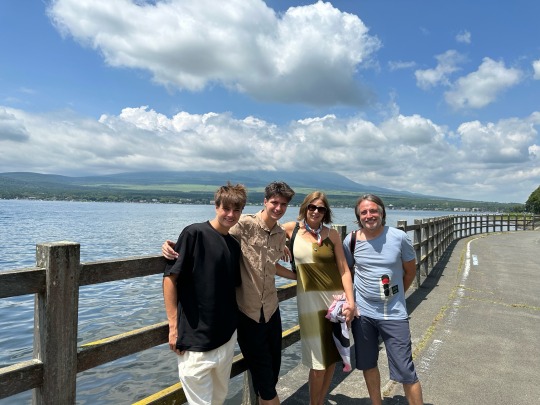
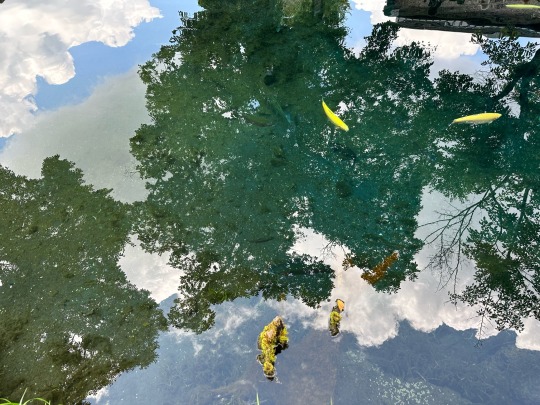

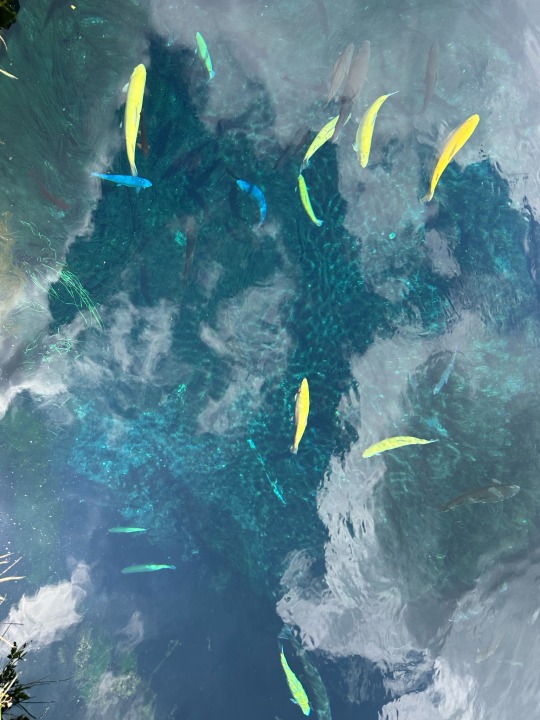
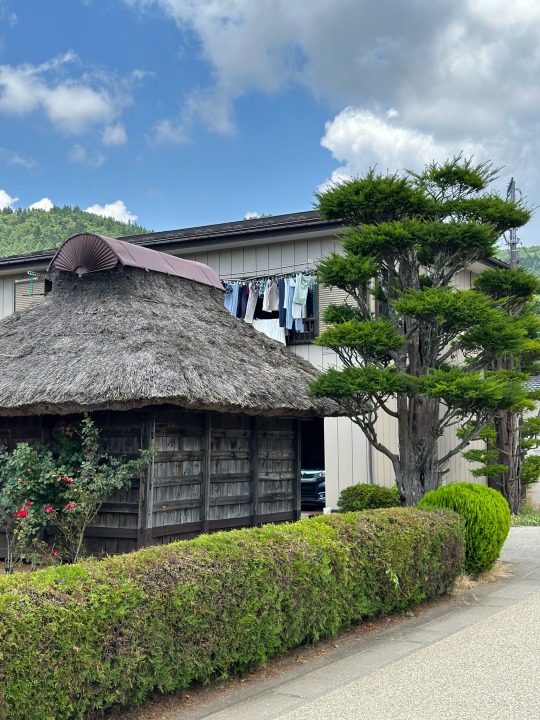
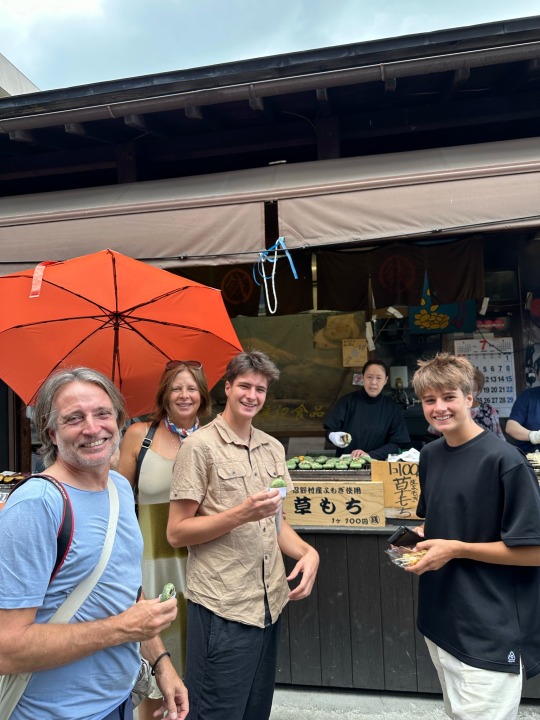

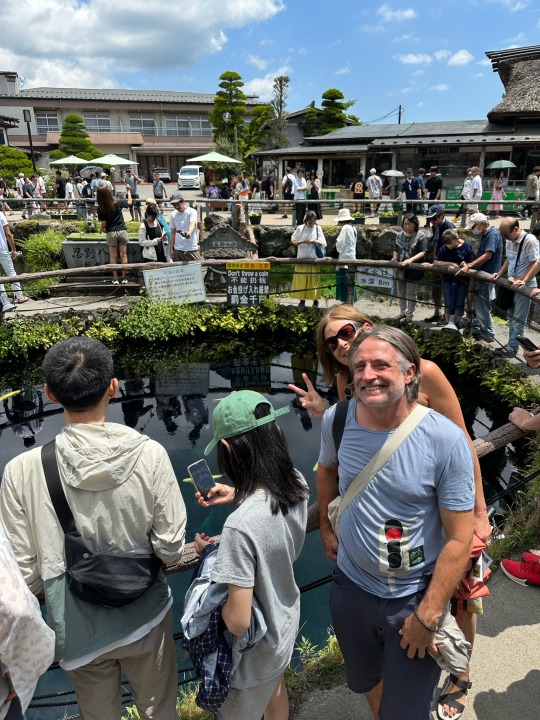
0 notes
Text
Nintendo Switch: VR Edition!
From AI to VR, who wants to live in the real world anyways? Is the world around us even real? Hold on, I will bring it back to the point at hand. Let’s talk VR!

This is not the first technology into VR, occulus rift has been in the game world for way longer already. But this is more the version of VR that is available and easy to understand for the broke and average minded person.
What You Will Need:

Besides a switch, and some games that are friendly to it, you will need that gadget. More info here: https://a.co/d/fFN6Zmc The labo by nintendo is a more expensive version of this, but this is a great “gateway” to it.
Some VR Friendly Games:
CAPTAIN TOAD TREASURE TRACKER
SUPER MARIO ODYSSEY
THE LEGEND OF ZELDA: BREATH OF THE WILD
FIVE NIGHTS AT FREDDY’S: HELP WANTED
NINTENDO LABO VR KIT – WONKEY FUN
SPICE AND WOLF VR
SUPER SMASH BROS ULTIMATE
Laid-Back Camp - Virtual - Fumoto Campsite and Laid-Back Camp - Virtual - Lake Motosu
The Knight of Queens
Rooms: The Adventure of Anne & George
Neonwall
DEEMO - Reborn -
Reflex Unit 2
Pikuniku
Skyrim
Battle Chef Brigade
There is talk of Among Us VR coming to the switch? That is a game, even though it might frighten me-I would love to play in a VR mode! Look out for a post where I try one of these games!
#rant#pixabay#nintendo switch#vr#virtual reality#amazon#gamer#gamer girl#now playing#captain toad treasure tracker#super mario oddesy#legend of zelda breath of the wild#five nights at freddy's#nintendo labo vr kit#spice and wolf#super smash bros ultimate#nintendo#the knight of queens#neonwall#skyrim#among us vr
0 notes
Photo
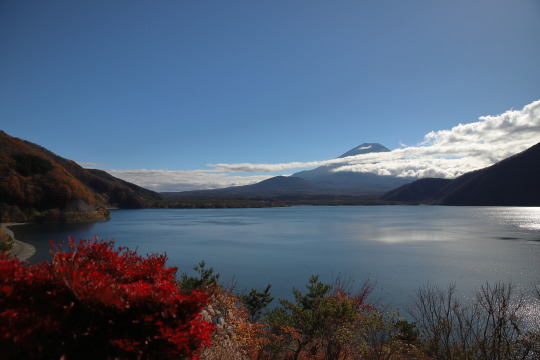
本栖湖 Lake Motosu
TAMRON SP 24-70mm f2.8
24mm f4.5 1/2000 ISO200
#EOS 6D Mark II#Canon EOS 6D Mark II#Canon#TAMRON#Tamron24-70mm#本栖湖#富士山#Mt.Fuji#photographers on tumblr#canonphotography
1 note
·
View note
Video
youtube
Laid Back Camp: Lake Motosu - Virtual ShimaRin - Otakunofuji Plays
0 notes
Photo
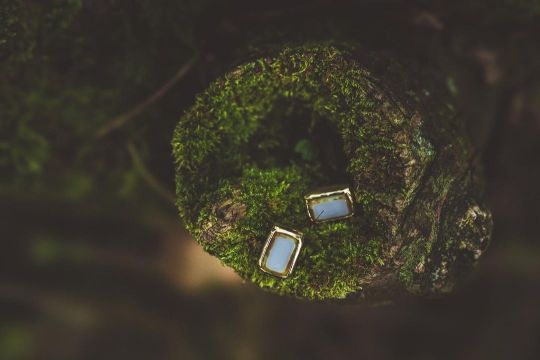
RESONANCE OF GROUND AND PEOPLE. Moss and Czech glass brass accessories At Lake Motosu. #MASHU #MASHUaccessory #MASHUjewelry Photo::: @namasayaio https://www.instagram.com/p/CjVaY7Cv8oD/?igshid=NGJjMDIxMWI=
0 notes
Photo

Lake Motosu 🗻 5/5 Fuji's Lakes Done ✅ 本栖湖 富士五湖 #motosuko #本栖湖 #富士五湖 #fujilake #fishing #фуджи #運転 (at 本栖湖) https://www.instagram.com/p/Ce0x6oMrQdc/?igshid=NGJjMDIxMWI=
1 note
·
View note
Text

Lake Motosu - Takahashi Shōtei (高橋松亭), 1871 – 1945
7 notes
·
View notes
